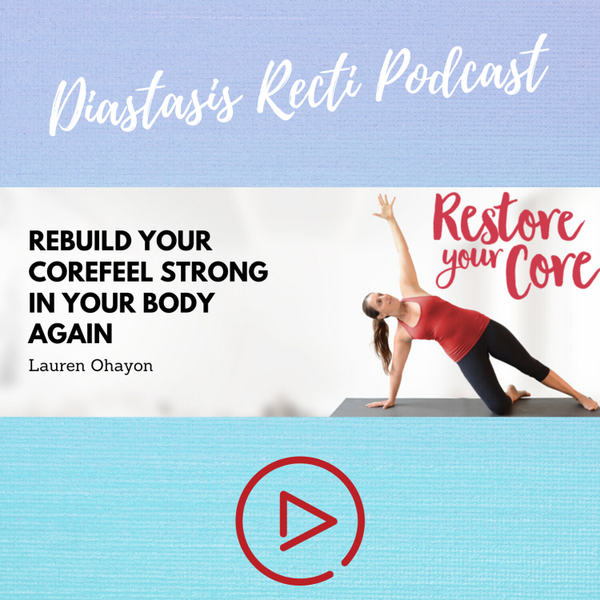
How Common is a Prolapse After a Hysterectomy?
- S1E24
- 02:52
- February 19th 2021
The uterus is one of the most important support structures in the pelvic floor. It provides support for the vagina and can help prevent conditions like vaginal prolapse or bladder prolapse. A hysterectomy removes the uterus, thus, removing additional vaginal support. In 2008 and 2014, two studies were conducted to determine whether or not the risk of prolapse developing increased once the uterus was removed. Both studies concluded that the possibility of developing vaginal prolapse 1 to 2 years post surgery is greater than not having the procedure done at all.
The most common form of vaginal prolapse associated with a hysterectomy is called enterocele – the small intestine herniating down toward the vagina. However, depending on the type of hysterectomy and your recovery, there is a risk of developing various types of vaginal prolapse.
Prolapse After Hysterectomy Symptoms
Although a hysterectomy is often recommended as a way to treat uterine prolapse. However, even a surgical procedure that seeks to resolve one issue, may run the risk of presenting complications during or post recovery. Removing the uterus may put you at a higher risk pelvic organ prolapse. Below are a few symptoms you may experience if this is the case.
The Most Common Prolapse Symptoms
Oftentimes, when a person is suffering from a vaginal prolapse, they may experience a feeling or sensation of pressure or heaviness in the vaginal region. This may present as a throbbing pain or a slight discomfort. Some people also report:
- A sensation of fullness (like something is stuck, or like sitting on a ball)
- Feeling as if something is falling out of the vagina.
Other Possible Prolapse Symptoms
- Your pelvic organs are all supported by each other. If one is removed or if you are recovering from a previous prolapse, it may affect the ability for the other supporting organs to function properly. In some cases people report:
- Difficulty performing bowel movements
- Urinary incontinence, or retention (difficulty emptying the bladder)
- Secondary prolapses – especially rectocele and cystocele
- Pain, discomfort during sex
- Difficulty using tampons
Pelvic Organ Prolapse After Hysterectomy
After a vaginal hysterectomy, many women are at risk of prolapse developing. The pelvic organs may become unsupported and slip (such as the bladder or intestines) and descend or herniate into the vaginal region. If you are experiencing increased pelvic pressure after your hysterectomy, it may be best to consult your doctor for a proper diagnosis, as this may be a sign of prolapse.
It may be helpful to understand how this happens and why you may be at a higher risk of prolapse after having a hysterectomy. Each of the organs located in the pelvic region are all supported and attached to the pelvic wall by the same ligaments, muscles, and tissues. If the uterus and cervix are removed, support structures must be added in order to maintain the normal support that was previously there. This may actually leave the pelvic area less secure and more vulnerable to prolapse.
If prolapse does present post-hysterectomy, there are a few that are more prone to occur. These include:
- Vaginal vault prolapse: This occurs when the vaginal vault (the top portion of the vagina) descends into the lower part of the vagina. In very severe cases, the vagina may actually turn inside out and protrude outside of the person’s vaginal opening.
- Cystocele: Also known as bladder prolapse, this occurs when the supportive tissues between the vaginal wall and bladder are stretched or weakened, causing the bladder to descend into the vagina.
- Rectocele: Rectocele occurs when the tissues and muscles that separate the rectum from the vagina are compromised. This can cause a bulge in the back vaginal wall.
- Enterocele: This occurs when the small intestine herniates and drops into the pelvic cavity, pressing against the vagina. This may occur simultaneously with rectocele after a hysterectomy.
Restore Your Core: Diastasis Recti and Pelvic Floor Talks
The Restore Your Core podcast is all about health and fitness for those struggling with Diastasis Recti or Pelvic Floor issues.
Lauren Ohayon makes videos, runs a thriving facebook group, and creates blogs that help people to feel better and reclaim their healthy bodies.
https://restoreyourcore.com/learn/diastasis-recti/
If you're too busy to read the blog then feel free to listen to the podcast! We hope to be a part of your core restoration journey.